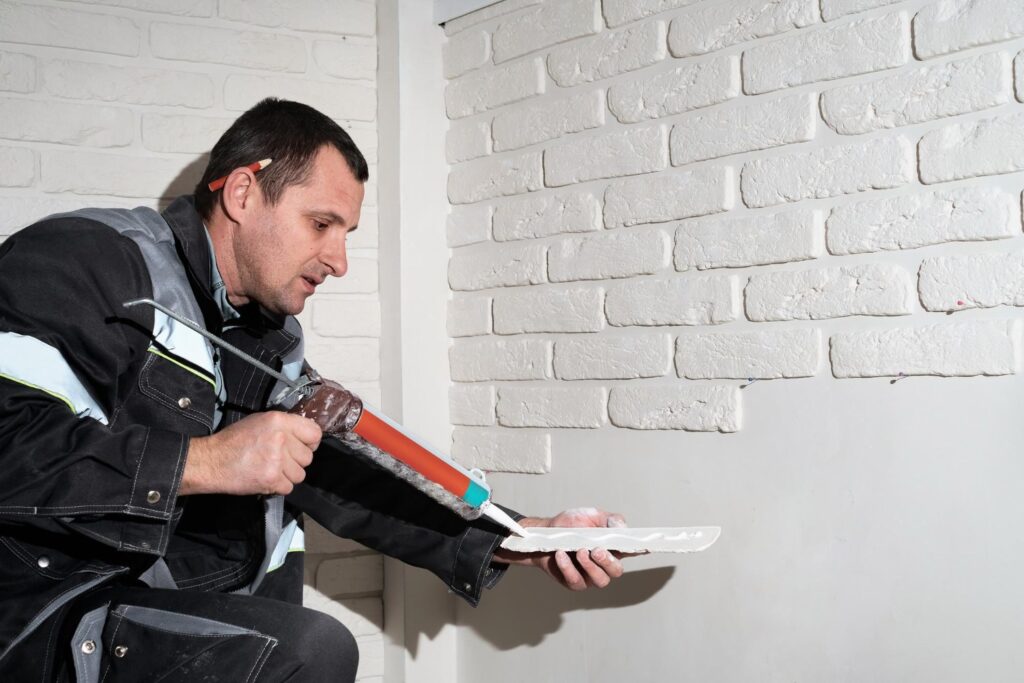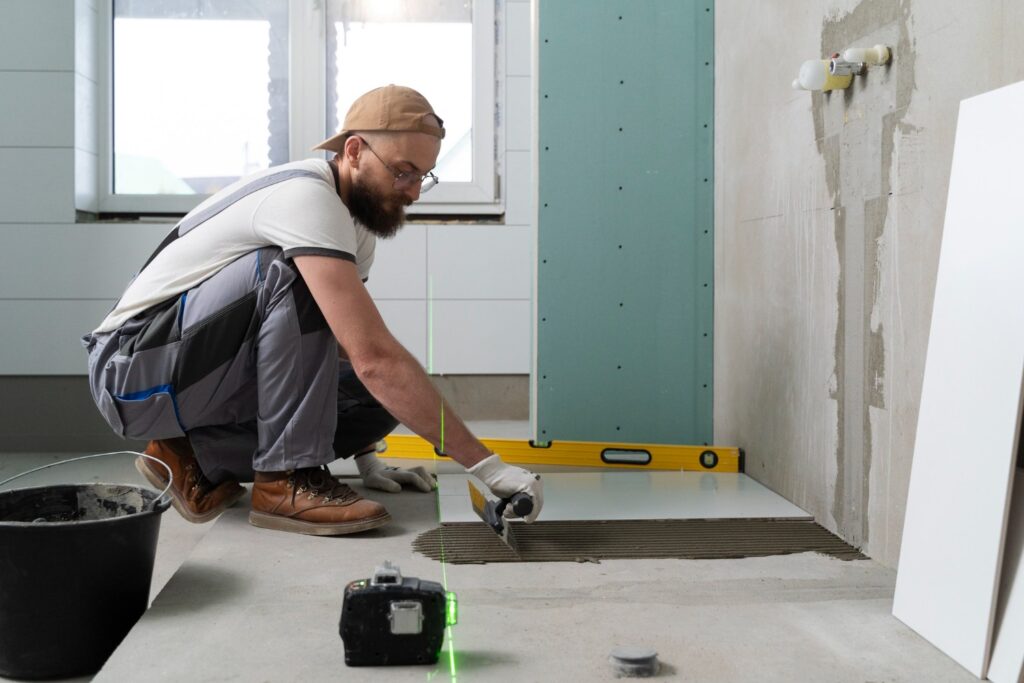Any residence should have a dry basement with routine maintenance. This is because basements are susceptible to moisture, which can cause mold and mildew to grow, weaken the structure and destroy the things that you store in your basement. Basement waterproofing safeguards your investment and makes for a healthier living environment for you and your family.
Thank you for reading this post, don't forget to subscribe!In this guide, we will give you information on typical moisture issues faced by basement owners and provide you with some DIY waterproofing methods, as we also discuss professional waterproofing solutions, the cost to waterproof a basement and how to ensure your basement remains dry for many years.
Identifying Moisture Sources
Before addressing moisture issues, it helps to know where the water is coming from. Here’s where basement moisture tends to come from most often:
Rainwater and Groundwater
If heavy rains have soaked the soil around your foundation, you may be welcoming water into your home through cracks in walls or floors. Ground water, particularly in regions of high water tables, can also rise up and seep into a basement.
Condensation and Humidity
Condensation can occur when warm, humid air meets the cold walls of a basement. This can cause moisture and encourage mold development.
-
Plumbing Leaks
Leaky pipes or an appliance like a water heater may cause your basement to have continuous wet spots that will all add to moisture issues down the road.
Once you have located the source, then you can determine what the best way to prevent water from entering your basement is.
DIY Waterproofing Methods
For smaller problems, you might even be able to do the basement waterproofing yourself. Here are a few simple — but effective — ways to do so.
Sealing Cracks
Cracks in walls or floors are among the simplest ways for water to enter a basement. Here is a short guide to seal them properly:
- Look for cracks you can see in your basement.
- Sweep up any loose debris in the cracks.
- Use a hydraulic cement or an epoxy sealant that expands as it cures to form a watertight seal.
- Pro Tip: You’ll also want to fill both surface cracks as well as ones behind walls to prevent damages from spreading.
Improving Ventilation
Not enough flow can cause condensation. To improve ventilation:
- Add a dehumidifier to manage dampness.
- Add or upgrade windows or vents to improve airflow.
- Employ exhaust fans, especially if your basement is home to a shower or a laundry area.
- This will also aid in increasing the air movement as well as decrease moistness.
Using Waterproof Paint
Waterproof paint might be a cheap fix for water seepage issues. It is a moisture barrier over walls and floors. But as simple as it may sound, this remedy may serve as a silver bullet at best. It’s most successful when combined with other preventive measures.
Drawback: Waterproof paint can’t correct underlying structural issues with a foundation or roof line, so only use it on a house where conditions are relatively dry.
Commercial Waterproofing Experts
If you have chronic or significant basement moisture problems, it’s best to consult with professionals. These sophisticated technologies offer lasting protection.
Exterior Waterproofing
This process includes digging around the foundation of your home to install a waterproof membrane or coating. Drain tiles can also be added to help route some water away from your house.
- Pros: Permanent solution that prevents water from seeping into your foundation.
- Cons: Costly and extensive damage to landscaping must be restored.

Systems and Processes for Interior Waterproofing
Interior methods, such as French drains and sump pumps, will redirect water already inside, out of, your basement.
- French Drains: Conduits placed underneath the basement floor to direct wastewater to a sump pump or other drain outlet.
- Sump Pumps: Install in sump pits and pump water away from around the foundation of your home.
These systems are efficient as well as less invasive than exterior alternatives.
Encapsulation
A basement sealer is commonly used to prevent moisture from moving through the basement walls and floors. It especially proves beneficial when working on crawl spaces and basements in wet areas.
- Pros: Protects against vapor and liquid moisture.
- Cons: Needs to be professionally installed and very expensive upfront.
Cost comparison between do-it-yourself and professional waterproofing.
Cost is a key consideration when choosing between DIY and professional. Here’s a general breakdown:
DIY Waterproofing Costs:
Hydraulic Cement or Epoxy Sealers: $20–$50 per container.
- Dehumidifier: $150–$500.
- Waterproof Paint: $30 to $80 per gallon.
On your own, it can be done for as little as $200 for small fixes, but it is labor-intensive and may provide an unpolished look that requires more frequent touch-ups.
Professional Waterproofing Expenses:
Exterior Waterproofing Systems: $5,000 to $20,000.
- Interior Solutions (French Drains/Sump Pump): $3,000 to $10,000.
- Encapsulation: $3,000–$7,000.
Professional products are overall more costly upfront, but more dependable Offer warranties and quality workmanship.
Tips for keeping Your Basement Dry with routine maintenance
Repairs and maintenance Even with waterproofing, regular maintenance is necessary in order to keep your basement dry. Here’s what you should do:
Regular Inspections:
- Check all walls, floors and ceilings for water stains, signs of leaks or cracks.
- Verify that these (if you have them installed) are working as they should.
Gutter Maintenance:
- Ensure that gutters and downspouts are unobstructed and working to divert rainwater away from your foundation.
- Direct downspouts at least 6 feet from your house.
Monitor Humidity Levels:
- Limit your basement’s humidity to less than 60 percent with a dehumidifier.
- Flooring and furniture are made of moisture-resistant materials.
Landscaping:
- Slope your yard to direct water away from your home’s foundation.
- Do not plant water-thirsty plants close to the house.
By enforcing a schedule of regular maintenance, you’ll save time and expenses on future repairs.
Get Your Basement Waterproofed Now
A protected basement is the essence of a healthy, happy home. DIY repairs or hiring a professional, early fix for moisture problems is necessary to prevent heavy damage later on.
If you’re not sure where to begin, consider hiring a waterproofing expert to analyze your basement’s unique requirements. A basement-cooling repair strategy, however, can be durable and functional for years to come.



